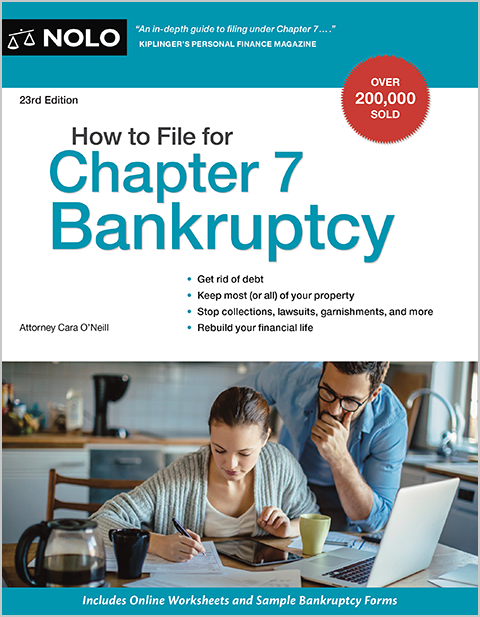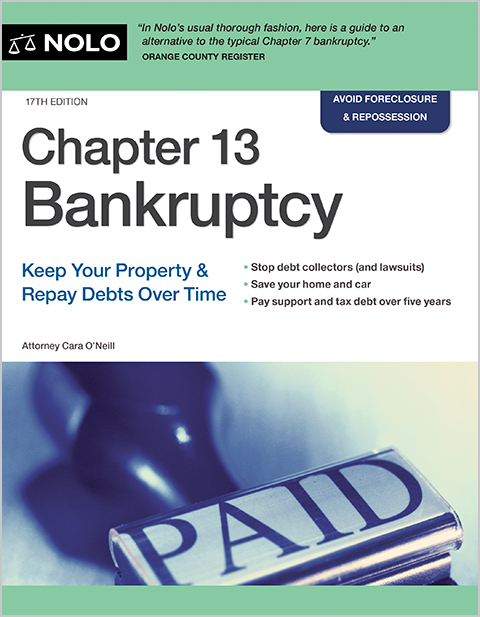Although acreage limits exist, South Dakota's generous homestead exemption protects the entire home.
If you're considering filing for bankruptcy in South Dakota, the South Dakota homestead exemption will help you protect the equity in your home. This article explains how much South Dakota's homestead exemption will cover and how to apply it in your bankruptcy case when you want to keep your house.
How Much Is the Homestead Exemption in a South Dakota Bankruptcy?
You'll use South Dakota's state exemptions because the federal bankruptcy exemptions aren't available (some states allow residents to choose between the two sets). You'll find South Dakota's generous homestead exemption explained below.
|
South Dakota Homestead Exemption |
|
|
Homestead exemption amount |
All equity in a qualifying property less than one acre in a town or 160 acres elsewhere. |
|
Can spouses who file a joint bankruptcy double the exemption? |
No. |
|
Homestead exemption law |
|
|
Other information |
Mobile home included; sales proceeds can be protected to a lesser amount (check current amounts); amounts subject to change periodically. |
|
Where to find other exemptions. |
What Property Can You Protect With the South Dakota Homestead Exemption?
In South Dakota, homeowners can exempt an unlimited dollar amount of equity in real property, including a home or condominium. However, the South Dakota system does have acreage limitations. The property cannot exceed one acre if it is located within a town. If it is located elsewhere, it cannot exceed 160 acres.
A mobile home is also covered, but can't be larger than 240 square feet at the base. It must also have been registered in South Dakota for at least six months before claiming the exemption.
South Dakota has a few other rules that probably don't apply to you, but here they are just in case:
- If you have two or more houses or mobile homes, you can only select one to keep and exempt as your homestead.
- If the homestead contains minerals, the United States government has claimed, the maximum size is reduced to 40 acres outside of a town.
- Gold and silver mines, mills, smelters, and related machinery cannot be homesteads.
Other homestead protections help protect against foreclosure due to delinquent taxes. The amounts protected depend on age and other qualifications.
Other Requirements for Keeping a Home in Bankruptcy
You probably won't have an issue protecting your home equity in South Dakota, but it's still a good idea to understand what happens when you have nonexempt home equity in bankruptcy. Typically, the Chapter 7 trustee appointed to your case would sell the house, return the exemption amount to you, pay off the mortgage, and pay creditors with the amount remaining after deducting the trustee's fee.
In Chapter 13, the trustee doesn't sell property, so you could keep it. However, that doesn't mean Chapter 13 filers get a break regarding how much equity they can retain. Instead, you'd need to pay creditors the value of the nonexempt equity through the Chapter 13 plan.
But that isn't all. Keeping your home requires being current on the mortgage when filing for Chapter 7. Otherwise, you could lose it to the lender through foreclosure, possibly even during the Chapter 7 case. If you're behind on payments when filing for Chapter 13, you have an option not available in Chapter 7. You can catch up on the payments over time through the plan.
Learn about other requirements you must meet in Your Home in Chapter 7 and Your Home in Chapter 13. Also, find out why filing for Chapter 13 is better than Chapter 7 when you're behind on payments and don't want to lose your house.
Claiming the Homestead Exemption
When completing your bankruptcy forms, you'll do the following:
- disclose your home on Schedule A/B: Property
- list your home and the homestead exemption law on Schedule C: The Property You Claim as Exempt, and
- if filing for Chapter 7, explain whether you plan to keep or surrender the home on Statement of Intention for Individuals Filing Under Chapter 7.
Because your home is likely your most valuable asset, consider consulting with a bankruptcy lawyer to ensure you can protect it in bankruptcy.
Where to Find the Homestead Exemption Statute
State exemption amounts are adjusted periodically but are not updated regularly for inflation and are not being updated in this article. You'll find the exemption statutes in the Codified Laws section of the website of the South Dakota Legislature.
When You Can Use Bankruptcy Exemptions
You can file for bankruptcy in South Dakota after living there for over 180 days. However, you must live in South Dakota for at least 730 days before filing to use the current state's exemptions. Otherwise, you'd use the previous state's exemptions.
If you lived in multiple states during the two years before filing for bankruptcy, you'd use the exemptions of the state you lived in for the majority of the 180 days before the two years immediately preceding your filing. (11 U.S.C. § 522(b)(3)(A).)
Also, you must own your home in the exemption state for at least 40 months before bankruptcy to avoid the homestead exemption being capped by federal law at $214,000 (amount adjusts on April 1, 2028). Homestead exemption use is also precluded when a filer engages in certain felonious or fraudulent acts. (11 USC §§ 522(p), (q).)
Learn more about filing for bankruptcy after moving to a new state and timing your bankruptcy case. Also, spouses can double some exemption amounts if both parties own the property, but not all of them. Learn about other filing considerations for spouses.
Need More Bankruptcy Help?
Did you know Nolo has made the law accessible for over fifty years? It's true, and we wholeheartedly encourage research and learning. You can find many more helpful bankruptcy articles on Nolo's bankruptcy homepage. Information needed to complete the official downloadable bankruptcy forms is on the Department of Justice U.S. Trustee Program website.
However, online articles and resources can't address all bankruptcy issues and aren't written with the facts of your particular case in mind. The best way to protect your assets in bankruptcy is by hiring a local bankruptcy lawyer.

